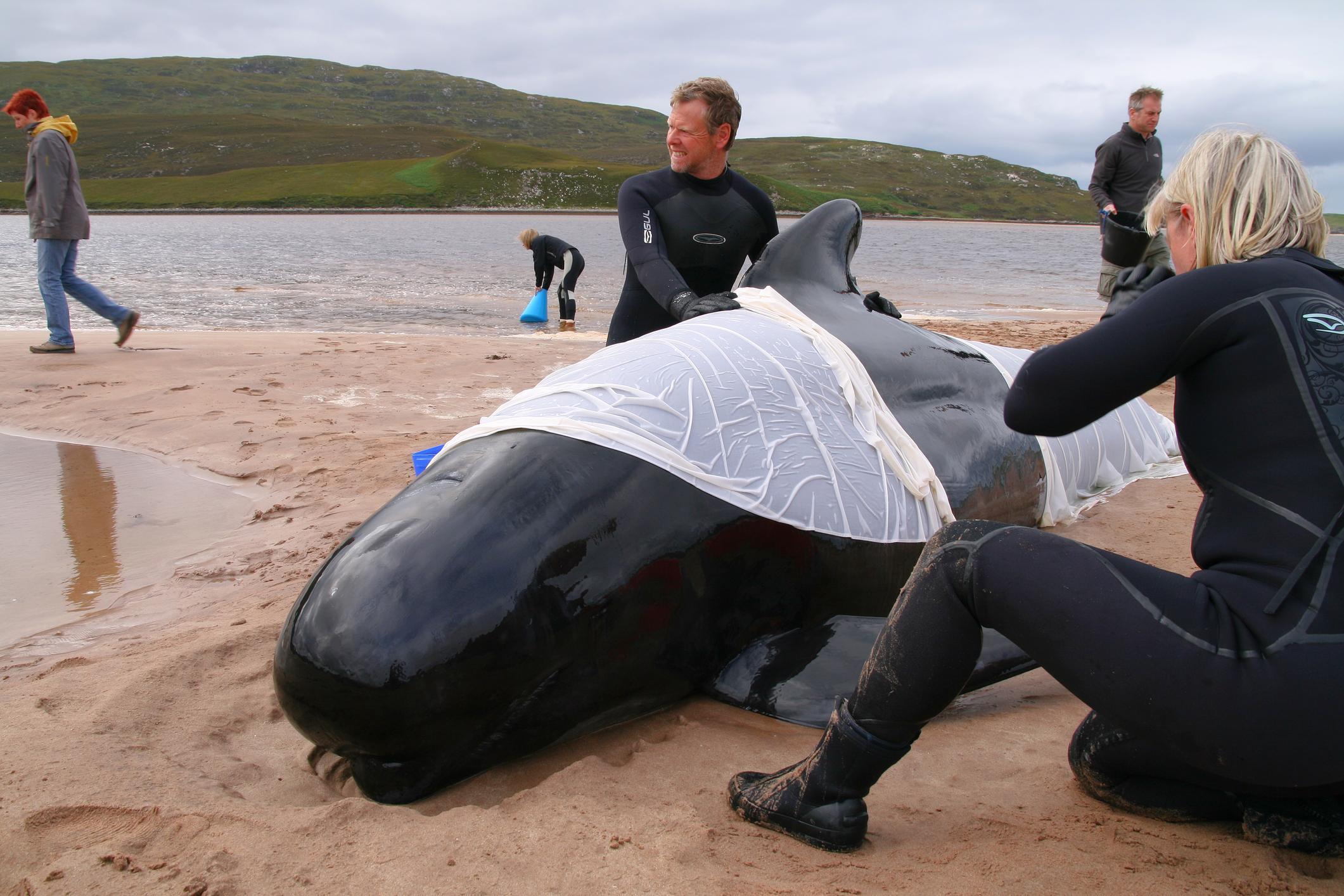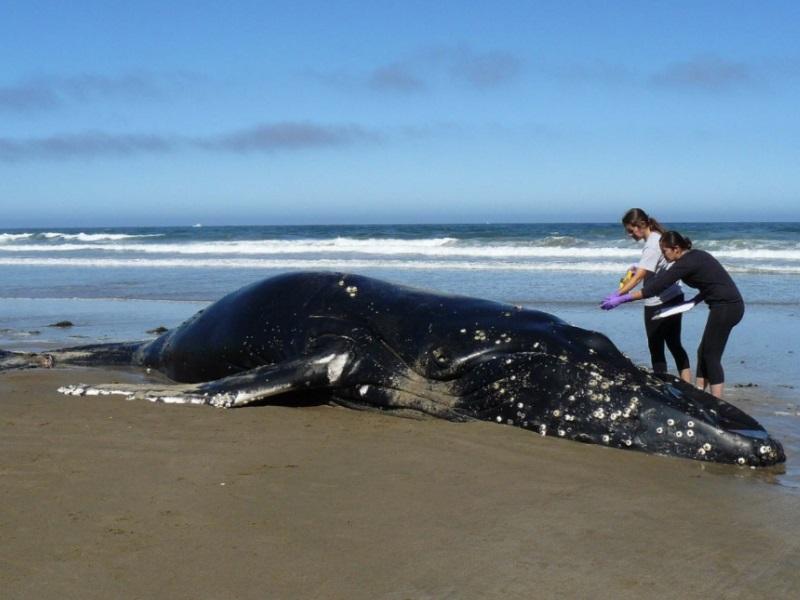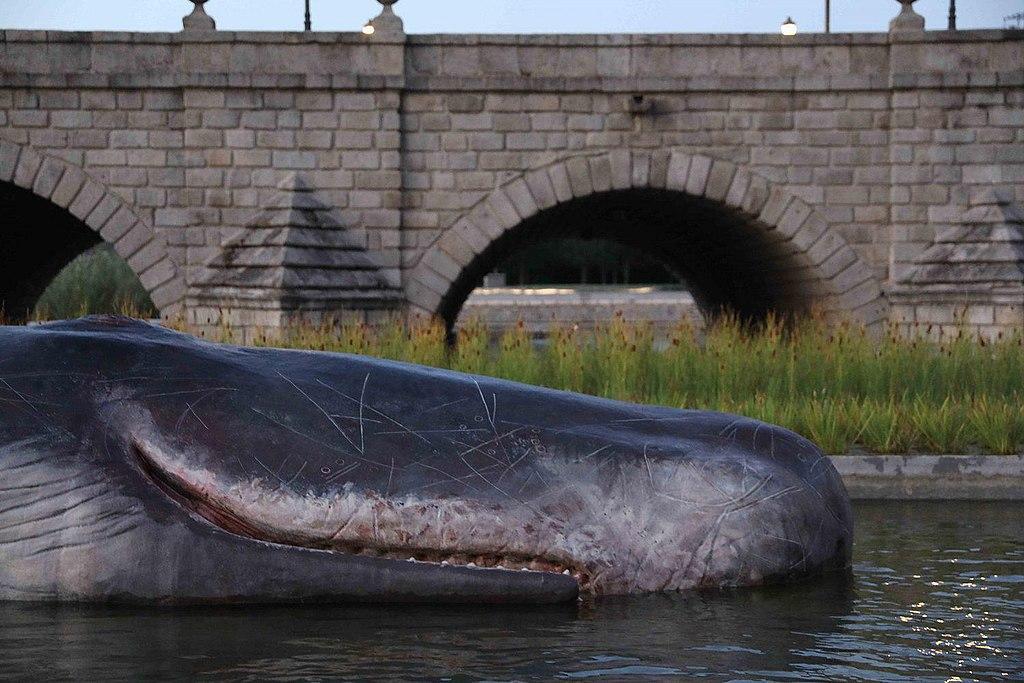Why Do Whales and Dolphins Beach Themselves? - Cetacean Stranding


Whales and dolphins beaching themselves is a mysterious and upsetting event that has been studied by scientists, conservationists, and the public for many years. These amazing marine animals, known for their grace and ability to live in the ocean, sometimes do something that goes against their nature: they come ashore onto beaches or end up in shallow water. This behavior, called stranding, raises important questions and makes us want to know why it happens.
The following article by thedailyECO explains all the possible reasons why whales and dolphins beach themselves, and what to do if you encounter one.
What is cetacean stranding?
Cetacean stranding, often referred to simply as "stranding" or "beaching", is an event in which whales, dolphins, and porpoises (collectively known as cetaceans) come ashore and end up on the beach or in shallow waters.
This behavior is highly unusual for marine mammals, as they are adapted to life in the water and rely on buoyancy for their survival.
Stranding events can involve a single individual or multiple members of a group or pod. These events can occur in various parts of the world and can involve different species of cetaceans.
Types of standing or beaching
- Live strandings: occur when cetaceans, such as whales, dolphins, or porpoises, come ashore but are still alive. In these situations, the animals are typically in a state of distress. Live stranded cetaceans often display behaviors indicative of their struggle, such as vocalizations, thrashing, and attempts to return to the water.
- Dead strandings: involve cetaceans that have already perished before coming ashore. These situations are equally important for understanding the causes and factors contributing to strandings. Dead stranded cetaceans are carefully examined through necropsies (post-mortem examinations) to determine the cause of death.
Stranding events may be linked to a wide range of causes, both natural and human-related, which will be discussed below.
To understand the biology of whales and dolphins, read our article on chordates.

Human-related causes why whales and dolphins beach
Whales and dolphins beach themselves for a variety of reasons, but human activities are a major contributing factor. Some of the most common human-related causes of whale and dolphin beaching include:
Boat strikes
Collisions with boats and ships can cause severe injuries to whales and dolphins. These animals may surface near vessels for various reasons, including curiosity or the pursuit of prey. Unfortunately, the speed and size of boats can lead to accidental collisions, resulting in trauma, injury, or death.
Noise pollution
Underwater noise pollution from ship traffic, naval exercises, and construction activities can disrupt the sensitive hearing and echolocation systems of whales and dolphins. Loud noises can disorient them, making it difficult to navigate, communicate, and find food. This disturbance may lead to disorientation and, in some cases, beaching.
Entanglement in fishing gear
Whales and dolphins can become entangled in fishing gear, such as nets, lines, and traps. This entanglement can impede their movement, cause injuries, or even lead to exhaustion and stranding. Conservation efforts often focus on developing more dolphin-safe fishing practices.
Pollution
Marine pollution, particularly plastics and chemicals, poses a significant threat to marine life. Ingesting plastic debris can harm the digestive systems of whales and dolphins. Additionally, exposure to pollutants like oil and toxic chemicals can lead to health issues, making them vulnerable to stranding.
Habitat destruction
Human activities like coastal development and habitat destruction can disrupt the natural environment of marine mammals. Loss of critical habitats, such as breeding and feeding areas, can displace these animals and lead to unintended interactions with human infrastructure or activities.
Climate change
Climate change, driven by human activities, can affect the distribution of marine mammal prey species. This may lead whales and dolphins to venture into unfamiliar areas in search of food, increasing the risk of strandings due to navigational errors or disturbances in their habitats.

Natural causes why whales and dolphins beach
Natural causes for whale and dolphin beaching are typically related to factors inherent to the animals or to environmental conditions. These natural causes can include:
Illness or injury
Sick or injured whales and dolphins may struggle to swim and navigate effectively, making them more susceptible to stranding. In such cases, beaching may be a consequence of their compromised physical condition.
Navigational errors
Whales and dolphins rely on complex navigational systems, including echolocation and sensitivity to Earth's magnetic fields. However, sometimes these systems can be disrupted by various natural phenomena, such as geomagnetic anomalies or strong underwater currents. As a result, they may become disoriented and strand themselves.
Environmental factors
Changes in the environment, such as shifting tides, storm surges, and rough seas, can lead to whales and dolphins being washed ashore. In some cases, these environmental changes can coincide with low tides, making it difficult for the animals to return to deeper waters.
Social behavior
Some species of dolphins are known for their strong social bonds, often traveling in close-knit pods. If one member of a pod becomes stranded, others may follow in an attempt to remain close, resulting in multiple strandings. These social behaviors can sometimes lead to tragic outcomes.
Escape from predators
In rare instances, dolphins being pursued by predators may strand themselves in an attempt to escape danger. While this behavior is infrequent, it has been observed in some cases.
Natural aging process
Older, weaker, or senile animals may become more vulnerable to stranding as their physical abilities decline with age. The natural aging process can lead to beaching when these animals can no longer keep up with their pod or navigate effectively.
It's important to note that while these causes are categorized as "natural," many strandings still require careful investigation by marine biologists and experts to determine the exact factors at play.
Explore the hidden world of whale sleep in our other article on how do whales sleep without drowning.

Why is beaching bad for whales and dolphins?
Beaching is a dangerous event for whales and dolphins, exposing them to the elements and various physical hazards that can lead to dehydration, overheating, injury, and death.
Being stranded on land deprives these marine mammals of the temperature-regulating and buoyant properties of water, leaving them vulnerable to overheating and dehydration. Their bodies are not designed to retain moisture in the same way terrestrial animals do, making them susceptible to rapid dehydration under the sun and wind.
In addition, the physical environment of a beach can pose numerous risks to beached whales and dolphins. Rocks, sharp shells, and other abrasive surfaces can cause injuries, while the weight of their own bodies can result in muscle and organ damage when not supported by water.
Furthermore, beached whales and dolphins are unable to access the oxygen they require to breathe properly. Prolonged beaching can lead to respiratory distress, potentially resulting in suffocation.
Finally, the stranding process itself, including being out of their natural element, experiencing pain and discomfort, and the presence of human bystanders, can lead to high levels of stress in these animals. Stress has wide-ranging physiological and psychological effects and can further weaken them.
Overall, beaching is a perilous event for whales and dolphins, exposing them to a multitude of hazards that can lead to serious injuries and death.
What to do if you find a stranded whale or dolphin?
If you find a stranded whale or dolphin, the most important thing to do is to contact your local stranding response network immediately. They will be able to assess the situation and provide assistance to the animal if possible.
In the meantime, here are some things you can do to help:
- Keep the animal wet and cool. Pour water on its skin and cover it with wet towels or sheets.
- Keep people and pets away from the animal. This will help to avoid stressing it further.
- If the animal is still alive, try to keep its blowhole clear of water and sand.
- Do not try to refloat the animal yourself. This can be dangerous and can injure the animal further.
- Take note of the animal's location and condition. This information will be helpful to the stranding response team.
- If possible, take photos or videos of the animal. This documentation can help scientists to learn more about beaching events.
- Be patient and stay calm.
Remember, the most important thing is to contact your local stranding response network immediately. They are the experts and will be able to provide the best possible care for the animal.
You might be interested in learning more about the threats facing Amazon pink dolphins, one of the world’s most endangered species, in our other article.
If you want to read similar articles to Why Do Whales and Dolphins Beach Themselves? - Cetacean Stranding, we recommend you visit our Facts about animals category.
- Gozalbes, P., & Antonio, J. (2010). Cetaceans and sea turtles in the Valencian Community .
- Hernández Mora, MG (2011). Diagnosis of infections caused by Brucella Ceti in Cetaceans .
- Martín, CO, Rubiano, MV, & Tolón, AVS (2009). Study of the causes of stranding and death of two cetaceans in the Canary Islands.
- Sironi, M., Marón, C., Vilches, F., & Schteinbarg, R. (2021). Impact of nets and ropes from fishing activity on the right whales of Peninsula Valdes . Available at: https://ballenas.org.ar/descargas/reportes/Informe%20Enmalles%20en%20Ballenas%20Francas.pdf








